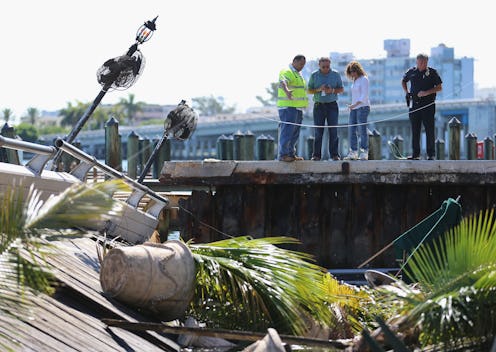News
How To Tell If Your Deck Or Balcony Is Safe
The deck of a North Carolina beach house collapsed Saturday, injuring at least 14 people — two of whom were left in critical condition, according to the Associated Press. Later, a hospital spokeswoman told the AP that 20 people total were taken to a local hospital. A family had rented the beach house in Emerald Isle, a coastal beach community, and was gathering on the deck for a group photo when the deck collapsed. The incident follows a balcony collapse in an apartment building in Berkeley, California, which killed six people. Deck and balcony collapses are relatively uncommon, according to authorities who responded to the North Carolina case. But, in light of these incidents, there are a few ways to tell if a deck or balcony is unsafe.
Police said the cause of the North Carolina deck collapse is under investigation, and there were not immediate reasons the deck gave way, according to Reuters. In the Berkeley case, investigators said wooden support beams on the fourth-floor balcony were badly decayed from moisture. Wood decay is one symptom of deck or balcony instability, but there are a number of other things that can also cause problems.
According to the Simpson Strong Tie and Home Safety Council, there are a few warning signs you can look for if you're worried about the safety of a deck or balcony. First, the council says that decks should fit together well with strong connections. Decks should be built "using a combination of wood, nails, screws, and metal connectors," according to the council's website. If you only see a lot of nails, if there are gaps where wood should be securely connected to or supporting other wood, or if things are wobbling, then you should get that fixed. More specifically, Mosby Building Arts says that if your deck was built with only nails instead of screws and fasteners, then it was built before the most recent safety codes were put in place. Have your deck reinforced or rebuilt entirely if it's only held together with nails.
Second, if the connections holding the wood together — nails, screws, etc. — are getting rusty or corroded, then they will need to be replaced. My dad restores old muscle cars, and he has a ridiculous saying that has stuck with me and makes me wary of my rusty fire escape: Rust never sleeps. So, check your deck or balcony's metal connections!
Third, you should always check the condition of the wood. Is it cracked or rotting from decay? If so, it needs to be fixed ASAP. Large cracks and rotting can make wood less stable and durable, which can lead to sudden collapses. Also, decks and balconies are only meant to last — in good condition — for specific periods of time, often no more than 15 years. If you know that your deck or balcony is more than 15 years old and it's never had safety updates, then get on that pronto.
Fourth, please, please, please, pay attention to weight capacities. If you have a tiny balcony that isn't supported by the structure of the building (maybe it's supported by small, wooden boards underneath that are attached to the building), then you should ask what the weight capacity is, according to Gaudette Insurance. Make sure you take into account the weight of any furniture you've placed on the deck or balcony.
Fifth, if you have a wooden deck, be sure its posts are not off-center with the footings on the ground, and also make sure that the posts supporting the deck from the ground bolted in place with a metal base plate. Posts that are missing their footings or that connect directly to wood or concrete could be made more unstable by water, dirt, or strong winds. This applies to balconies as well: if the beams supporting your balcony don't seem to be firmly planted against or into whatever is supporting them, then the balcony might be unstable.
Keep yourself safe, and inspect your deck or balcony regularly.
